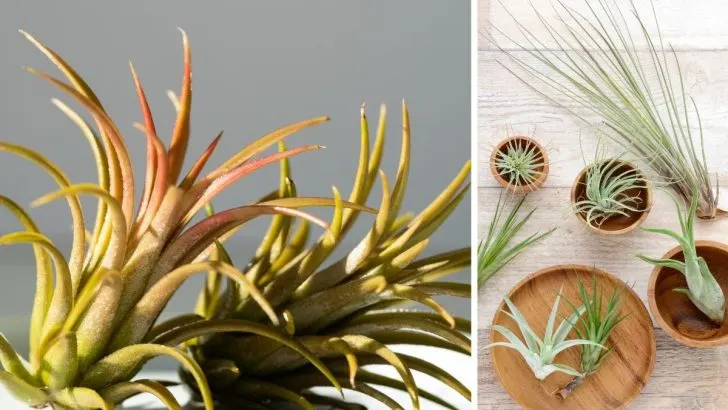Do you want to buy an air plant in the near future? But are you interested in how long do air plants live? This is of interest to anyone who wants to buy these plants for their home. Because they have very specific growing requirements.
In today’s article, in addition to the question of how long do air plants live, we will answer several other similar questions. And present you with the most famous types of these plants.
These air plants, if you decide on them, will make your home beautiful with their colorful flowers and other interesting features.
Of course, the prerequisite is that you give them the best possible care. And they will in return grow happily in your home. The lifespan of an air plant will make your life much more relaxing.
If you have made coffee, I am ready to start. Shall we then?
What Are Air Plants?
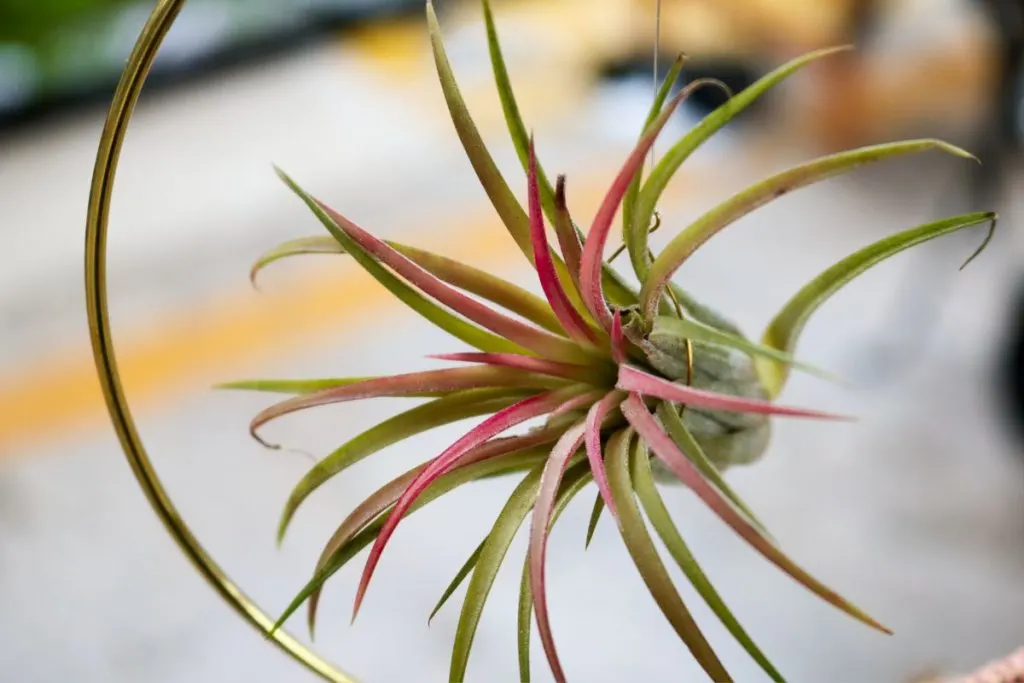
This group includes perennial plants that in their natural habitat grow on other plants. Most often on the bark of trees, but without parasitizing them.
Very interesting is the fact that they do not grow on the ground. Their natural habitat saves them from herbivores and provides them with the opportunity to supply themselves with energy.
They get the needed energy through the process of photosynthesis. Because they grow above the ground where enough light reaches them.
Let’s learn more now about how long air plants live and other interesting facts about them.
How Long Do Air Plants Live (Even In Best Conditions)?
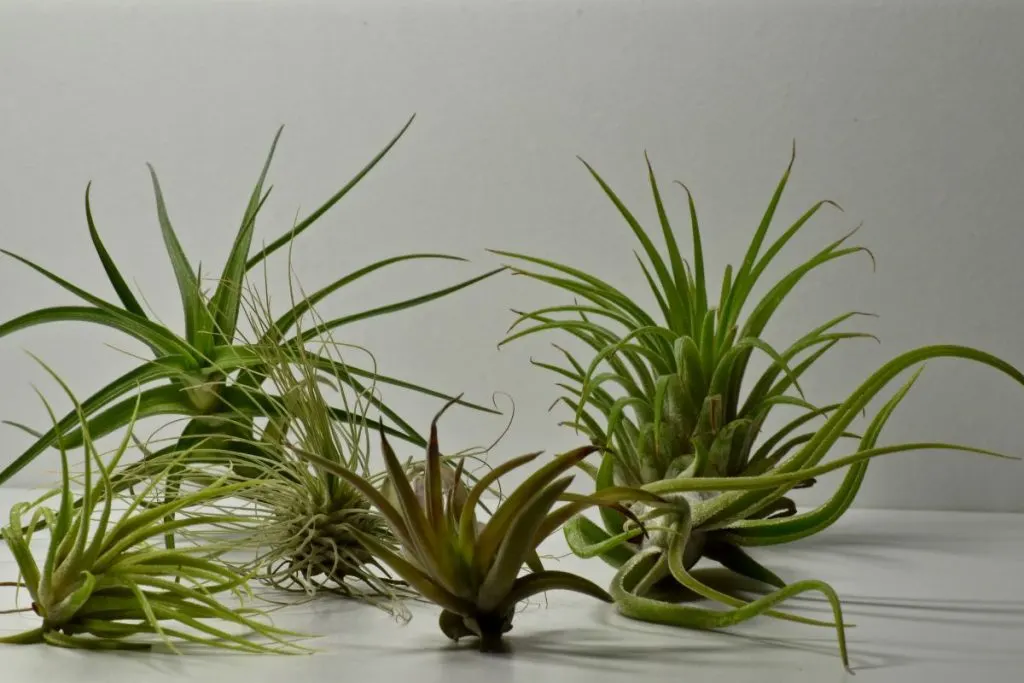
Even when you provide your air plants with the best possible conditions, their life period won’t be longer than 5 years. Depending on the species, some live 2, some 3, and some 4 to 5 years.
Of course, we’re talking about ideal conditions in which your air plant is living. But let’s be fair, 5 years is a perfect period to own a plant and then buy another one.
How Long Air Plants Survive With No Water?
Their maximum life cycle with no water is 2 weeks. A spray bottle is a good option for these plants, so make sure you have one near.
Despite the name, air plants cannot live alone in the air only and must have a frequent watering schedule. Proper watering is one of the most important parts of proper indoor air plant care.
Top 3 Most Popular Air Plants
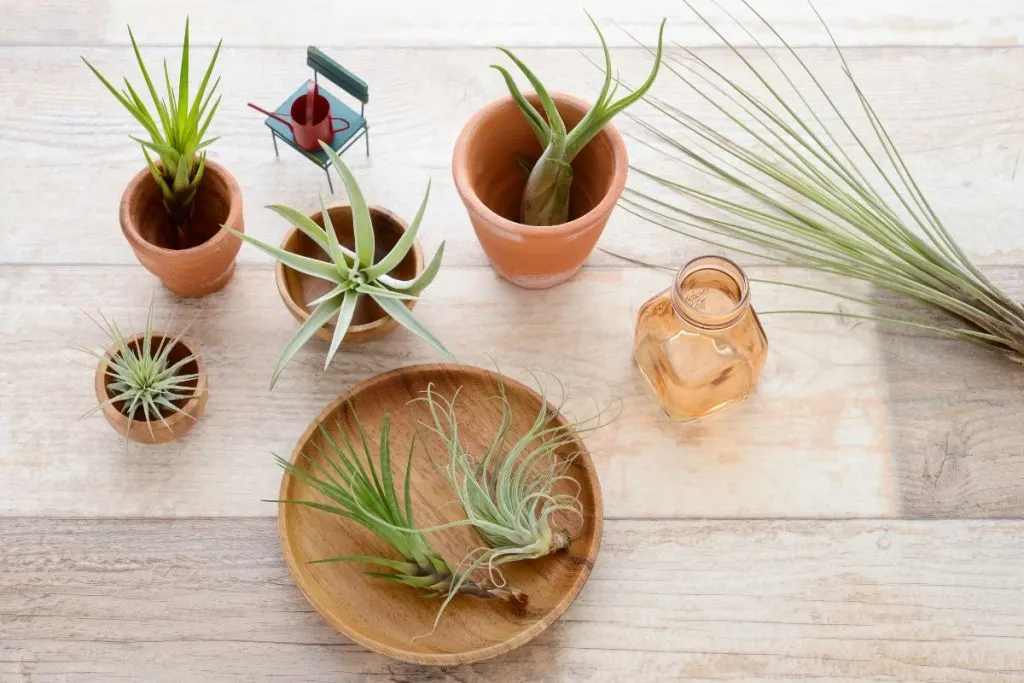
Just as with any other plant family or plant variety, you always want to know the most famous plant types. Knowing you have the most famous type of plant in your house is pretty special for a plant lover.
We’ve chosen 3 top best air plants that would look amazing in your home. Let’s learn more about them.
1. Tillandsia
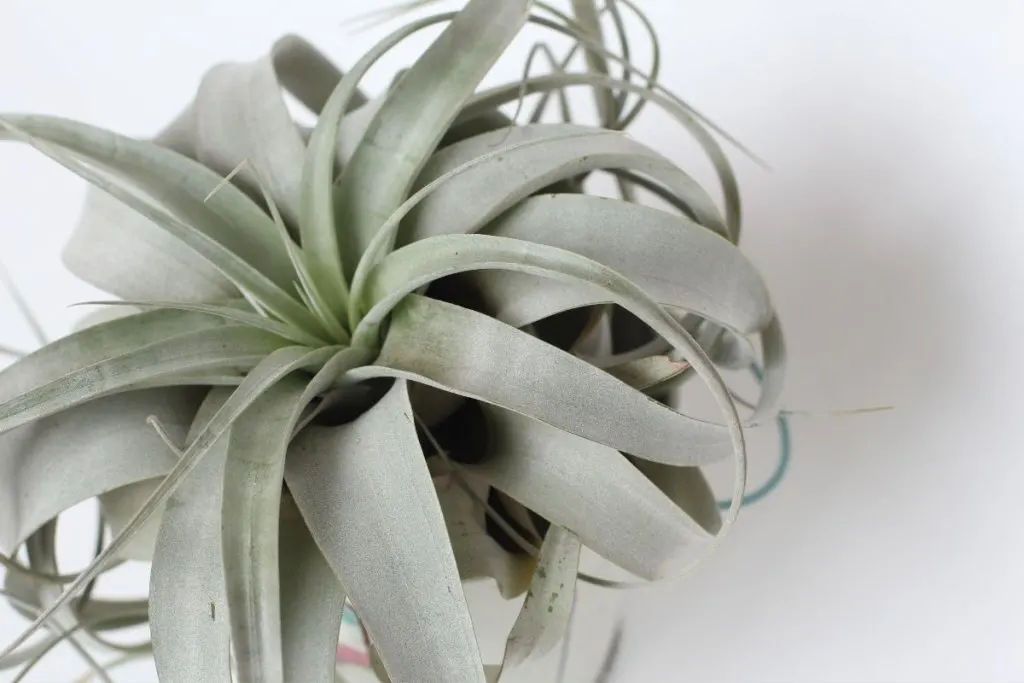
Tillandsias have delicate grassy leaves. Most species bloom in shades of pink to red, and the leaves can also take on the same tones. Like most species from the bromeliad family, the plant dies after flowering. But at the base, it creates several shoots that grow together with the mother plant.
Tillandsia was very popular in the ’70s as houseplants, but also as an integral part of flower arrangements and bouquets, and today they are back at the big door.
These houseplants have now a place in the space as a kind of minimalist sculpture consisting of delicate plants. They have beautiful colors placed on specially designed holders and coasters or in terrariums.
- When buying, it is very important to find out about the chosen species. To find out what its requirements are, and to choose a healthy plant whose leaf tips are not brown and shriveled, while it is quite normal for the base to be brown. Plants should be provided with plenty of light and protected from drafts and low temperatures.
Air plants will thrive best if you place them on a windowsill. If you place them outside in the summer, make sure that direct sunlight does not damage the leaves. It can cause them to get brown spots and become too scattered.
From spring to summer, you can feed them with liquid orchid fertilizer according to the instructions on the packaging.
There is a myth that is often in association with air plants. And that is that they do not need water because they have no roots.
- This is completely wrong because air plants require a lot of moisture and oxygen for the photosynthesis process. We can say that they are like a sponge. If you regularly spray them with water, they will stay moist, but if you let them dry completely, you will have to soak them all over to get them wet again. This is exactly the basic rule of watering air plants.
When sprinkling, take care of the furniture and objects so as not to wet and damage them. After soaking, provide the plant with a light and airy place so that excess moisture does not lead to rotting.
2. Xeric Air Plants
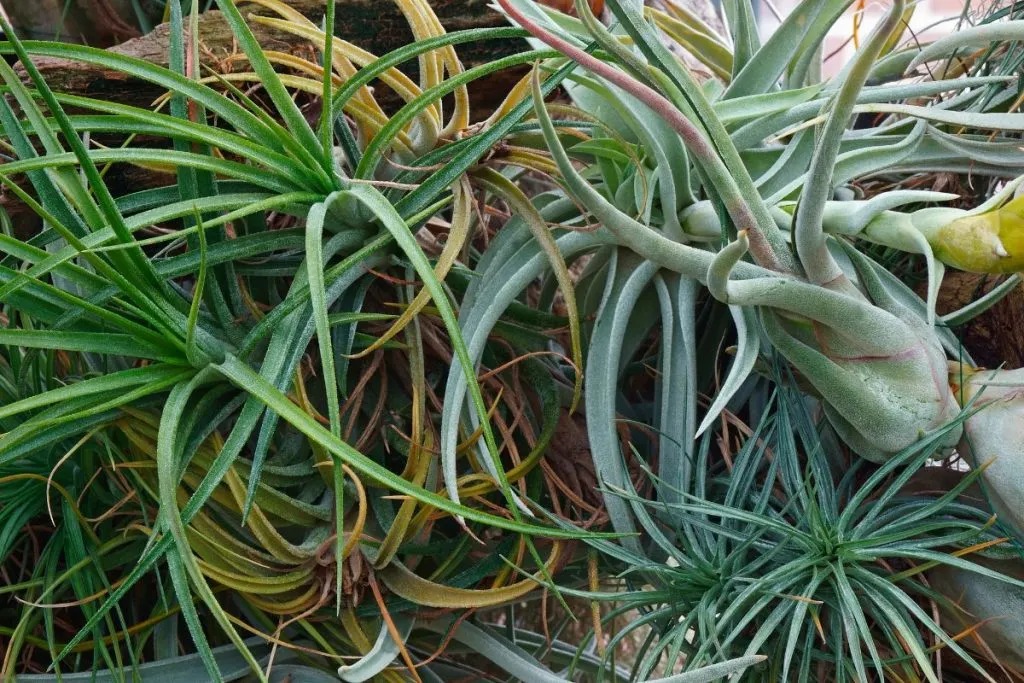
We talk a lot about air plant care, but air plant care varies greatly from species to species because there are many different varieties of Tillandsia from different native habitats. Air plant care is not “one size fits all.”
One of the main factors that determine the type of care and environment a Xeric plant prefers is whether it is a mesic air plant or xeric air plant or something in between.
But what exactly does that mean? Both Mesic and Xeric Plants are the default environment types Tillandsias come to and prefer.
They are also used to thriving under a forest canopy, so they prefer bright or filtered indirect light. Air plant Xeric means “dry” in Greek and comes from a dry, desert-like climate that can often be rocky.
Characterized by its abundance of grooves, this air plant prefers light and can tolerate direct sunlight, but prefers less water.
We generally recommend spraying or soaking these plants rather than soaking them in water, and some plants like Tectorum Ecuador like to spray now and then. In their natural habitat, these xeric plants usually absorb sufficient moisture from dew or the air.
How do you know? The color, texture, and shape of an air plant’s leaf provide some clues as to whether it is a mesic plant or a xeric plant. Mesic plants tend to:
- have dark green leaves,
- have smooth leaves with multiple petioles,
- leaves are often densely packed or cup-shaped.
3. Air Ferns
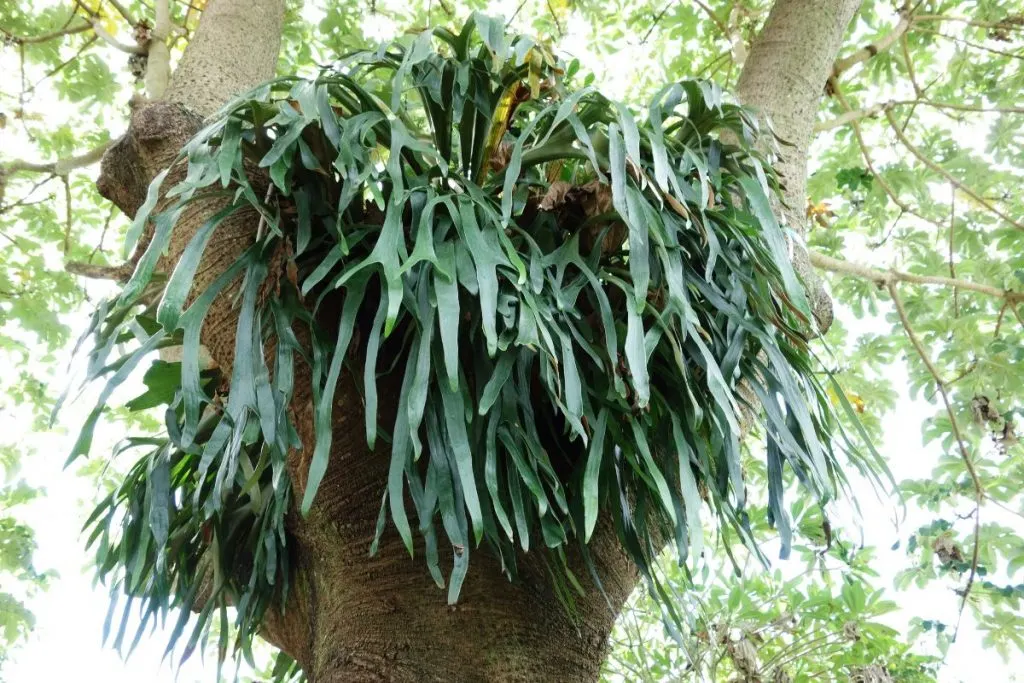
Not all ferns are epiphytes, but some ferns can grow both terrestrial (in soil) and epiphytic. These include horned fern (Platycerium bifurcatum) and bird’s nest (Asplenium nidus).
Fern is the name for a special division of the plant kingdom that consists of more than 10,000 plants that differ from mosses because they have stems, roots, and leaves. However, unlike true plants, they do not have flowers or seeds but reproduce by spores.
True ferns (Polypodiopsida) are also called ferns, and they are just one class of ferns that are herbaceous perennials with elongated leaves. Each subspecies of fern is named according to its appearance or characteristics.
Unlike real plants, the fern does not have all real organs, so its morphological structure is different and very easy to recognize, regardless of the genus it belongs to. Other types of ferns indoor are similar to air plants as well.
The fern has a root that continues to the root, a thickened part of the plant that can be woody, but it is the basis of the whole plant and the leaves grow from it.
Care Guide Of Air Plants
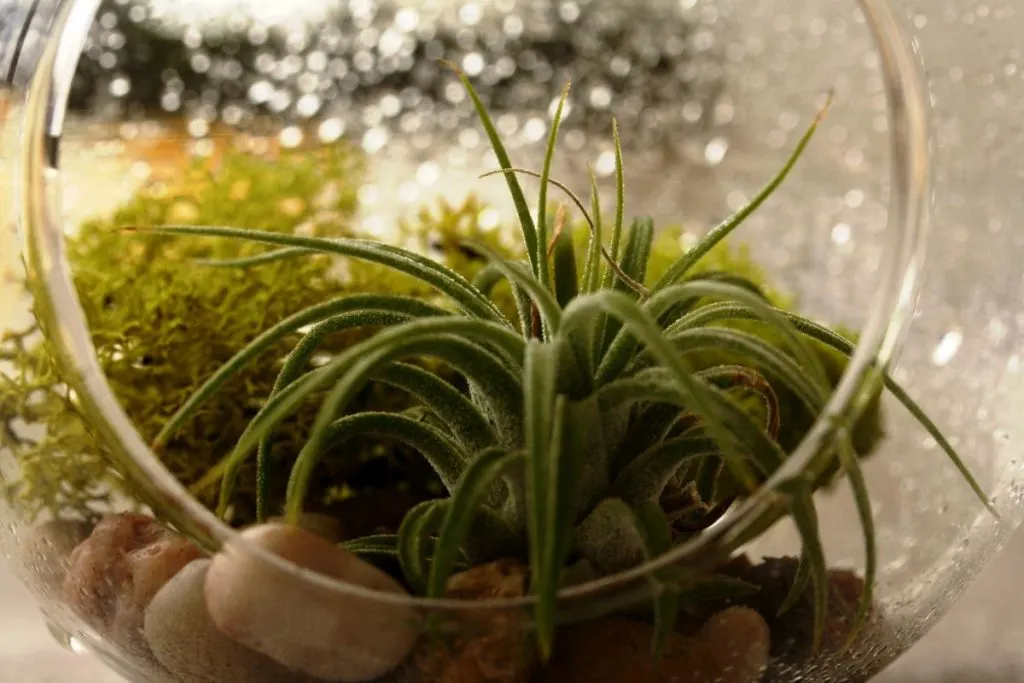
As we said above, these plants are low maintenance after all. Once you learn how to take care of them it will be just a simple morning routine for your plants.
Read this care guide below and make sure you’re giving your air plants the best possible care. I’m sure you’re going to do it great!
Propagating Air Plants
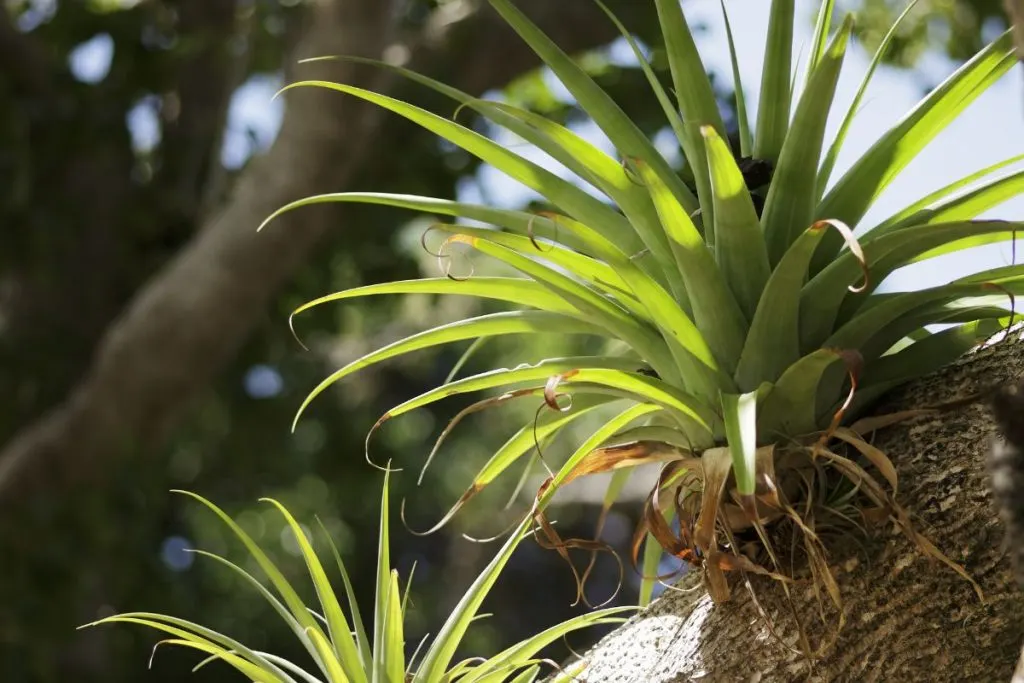
Because the term “air plants” encompasses a wide variety of plants, there are several ways to propagate air plants.
In general, epiphytic plants reproduce easily by dividing the offspring from the “mother plant”, but some species, such as the tropical cactus, also reproduce by stem cuttings.
Before using either of the two methods below, research the best way to propagate the specific type of air plant you have.
How Are Air Plants Propagated By Division?
A healthy, established air plant will grow saplings or twigs over time. They can be separated and planted as individual plants.
Grab the bottom of the plant and gently pull the baby plant away from the mother plant to separate them. If it is not easy to separate, you can use a sharp knife or scissors to separate it. Once separated, start taking care of your newborn like a parent.
How To Propagate Air Plants By Stem Cuttings
Remove cuttings 4 to 5 inches long using sharp or pruning shears. Place the cut edges in a cool, dry place for at least 24 hours to dry. Fill a glass or small vase with distilled or filtered water and place the bottom of the cut in the water.
Place the cuttings in bright, indirect light and change the water once a week. After a few weeks, you will see new roots growing in the water!
Light In Indoor Living Space Of Air Plants
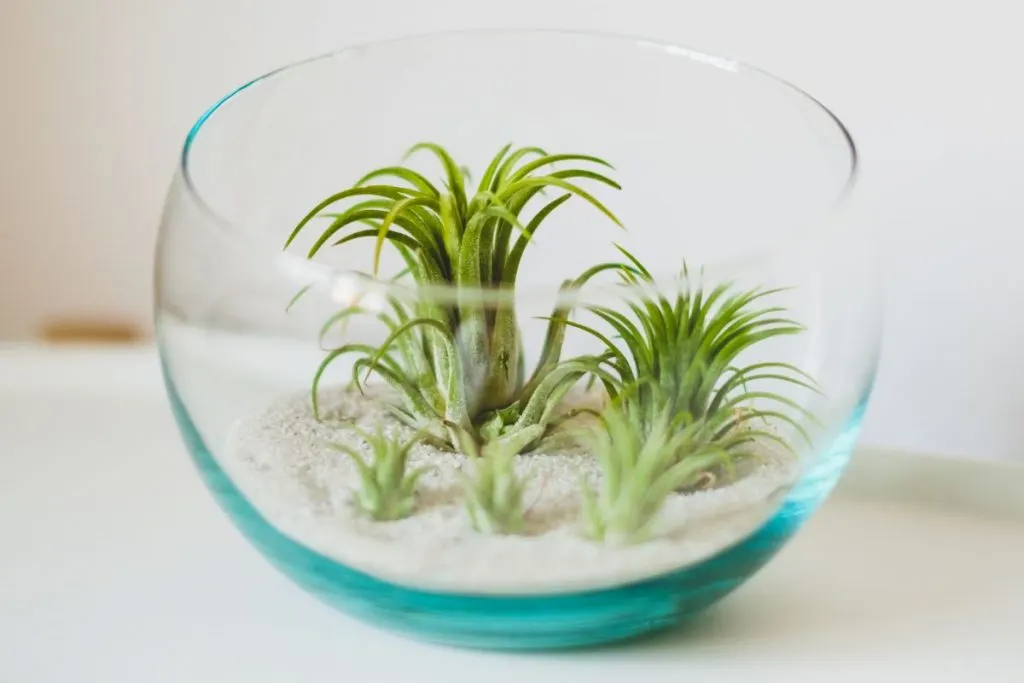
Because air plants are commonly found on trees and other large plants under canopies, they are used to receive strong or moderate indirect light. Avoid prolonged exposure to direct sunlight, which can easily burn the delicate leaves.
Water Needs For Air Plants And How Long Do Air Plants Live
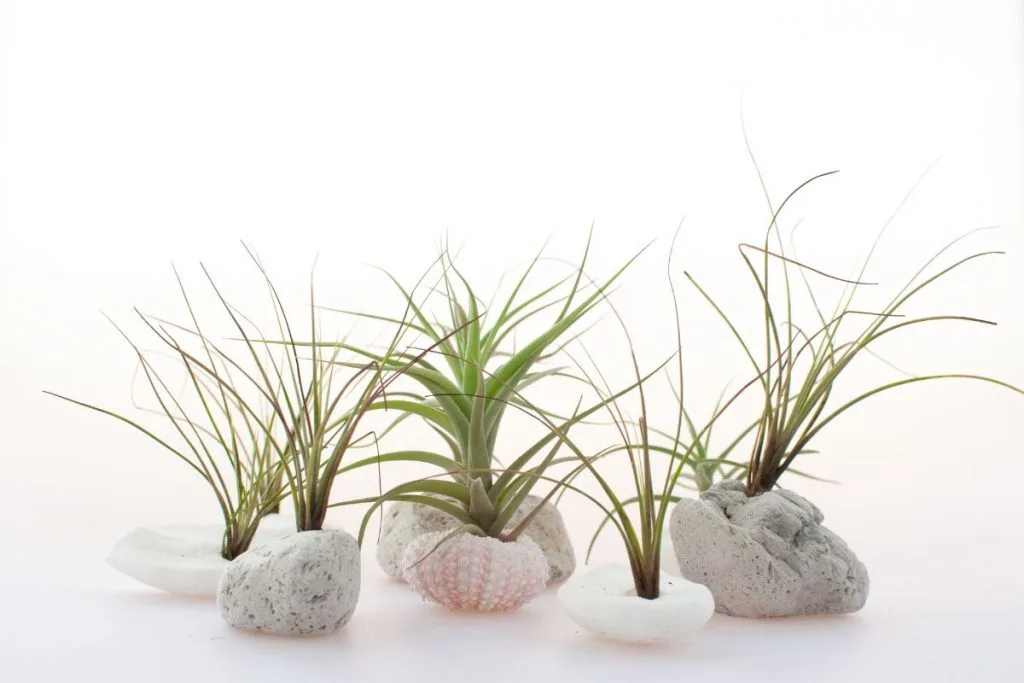
Air plants need regular watering to thrive indoors. However, since these plants grow without soil, watering air plants is slightly different than watering other houseplants.
Most air plants can be successfully watered using a bowl of distilled water for 20-30 minutes every two weeks. Some air plants prefer a steady mist or quick soak to a long soak.
Temperature And Humidity For Growing Air Plants
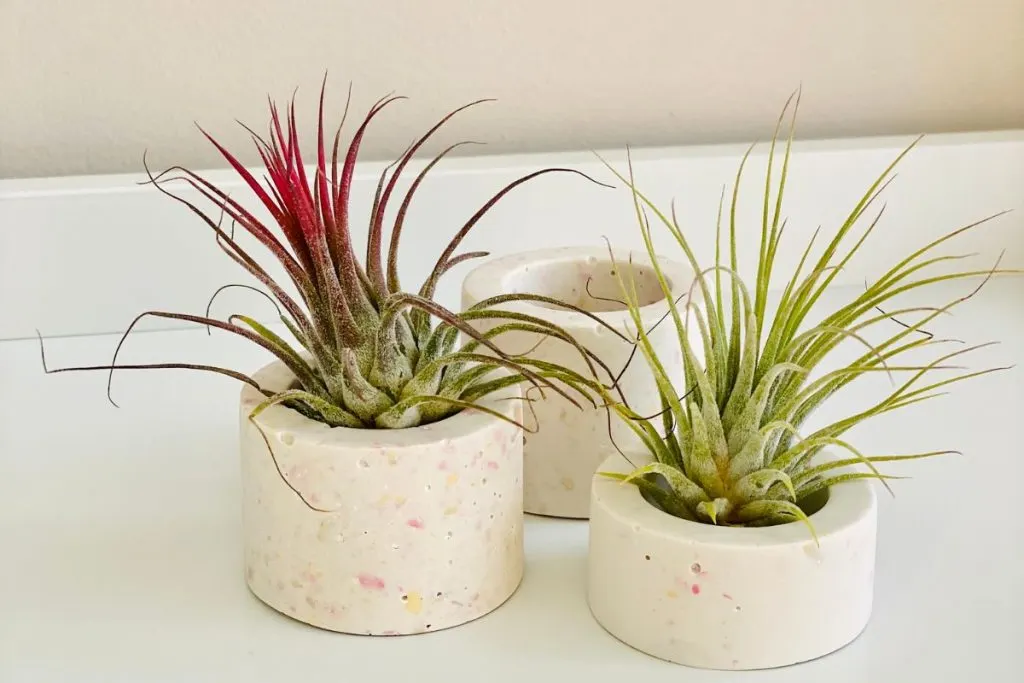
One of the most important parts of proper indoor air plant care is making sure they get enough humidity and moisture.
Air plants prefer warm, moist conditions to avoid drying out. Normal home temperatures are suitable for air plants. Avoid exposure to cold drafts or winter temperatures.
Removing Pups From A Mother Plant
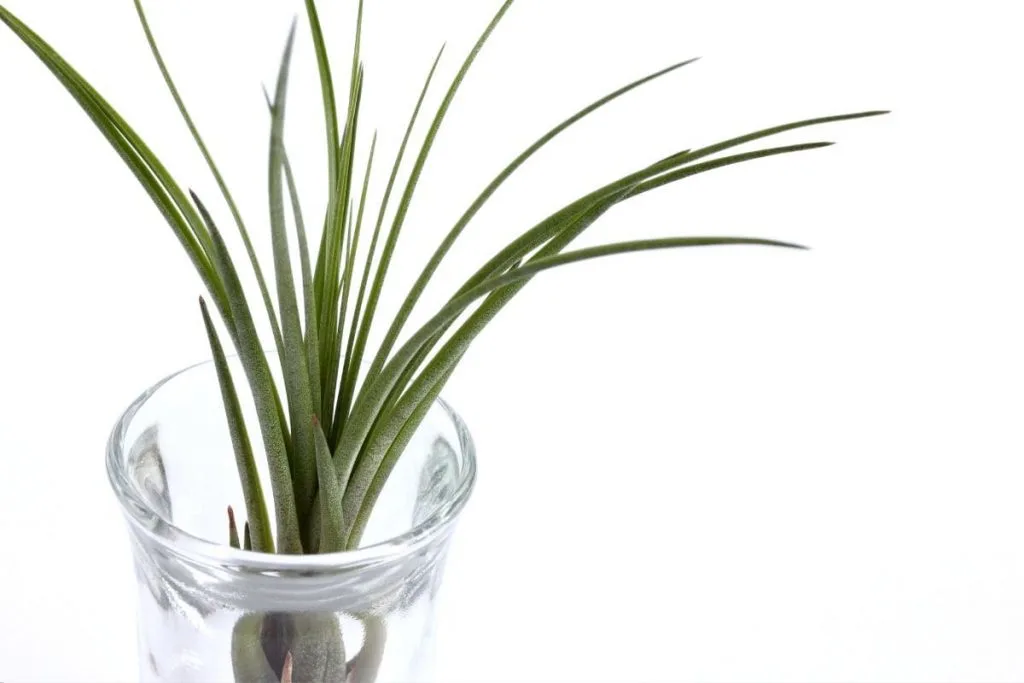
When the pups are about 1/4 to half the size of the parent plant, they are ready to split. We recommend using garden shears or a sharp kitchen knife for a clean cut. Carefully lay the mother plant on its side and cut off the pupae.
Now you can start your air plant farm! After the first separation, it is best to “tighten” the separation points of the mother and the newly separated cub for a few days. Allow the plants to rest and the cuttings to dry before returning them to the terrarium or watering them.
This will help inhibit the growth of bacteria at the cut site and prevent spoilage. In nature, no one climbs trees and rocks to separate plants from the air. If left alone, these tillandsias will slowly begin to form clumps. Over time, large air plant bulbs can cover entire branches and rocky areas.
Ionantha balls, which are groups of Ionantha air plants that have not been divided for several years, when in bloom, clusters of natural air plants create a beautiful flower show!
Blooming Air Plant
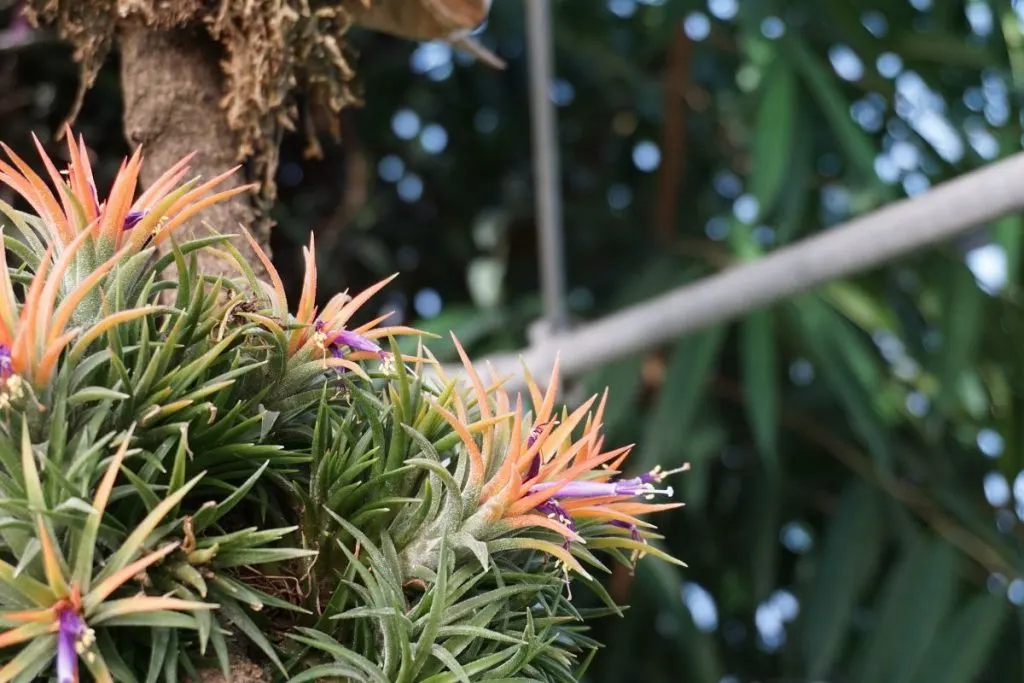
It usually takes two or three years for an air plant to mature, and once it does, add another 3 to 4 years to that, and that is when air plants bloom. Air plant blooms for the first time and the last time.
Air plants occasionally show some other signs of blooming air plan, and it might seem like they’re about to bloom. But it only happens once in their life cycle.
But, just a moment before air plants die, air plants produce pups and that way they continue their same growth cycle. With baby plants, new plants are coming as well. You’ll soon have new air plants grown.
FAQ About Air Plants
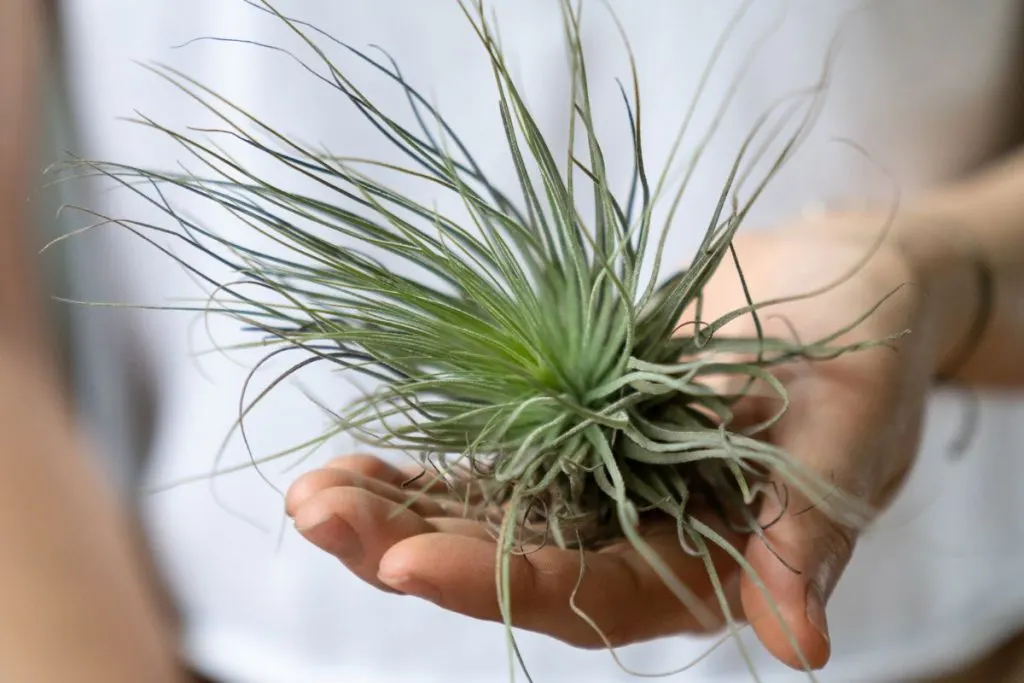
We always try our best to answer all the possible questions, but of course, you always have some extra. When you’re buying a new house plant that is completely normal.
To answer all of them about air plants, this section should be a perfect answer box for all your questions about air plants. I’m sure you’ll find them all here!
Do Air Plants Grow Slowly?
Air plants are generally known to grow slowly, but some types of plants classified as “air plants” have some differences in growth depending on the type of plant you have.
For example, air plants such as tillandsia and orchids are relatively slow growing, while tropical cacti and ferns are slightly faster-growing air plants.
How Tall Air Plants Can Grow?
The minimum height of air plants is usually 2 inches, while their biggest height is 12 to 13 inches. Of course, this applies to air plants that live in perfect conditions such as indirect sunlight, bright light, good air circulation, great air supply, tap water watering routine, removing dead leaves, and making their growth conditions close to their natural habitat.
Keep your air plant in these conditions and their life expectancy will be amazing before they eventually die.
Is It Hard To Keep Air Plants Alive?
Air plants are very low-maintenance houseplants that can be grown happily indoors. The hardest part of caring for them is getting used to their unique needs compared to the houseplants you’re used to.
How To Know If My Air Plant Is Dying?
If the leaves of an air plant have brown, hard tips, it is a sign that the plant is not getting enough moisture. As a first step, increase the humidity around the plants before increasing your watering schedule. This can be done by installing a small humidifier nearby or by moving the plant to a more humid room in the house.
If problems with new growth persist after making these changes, slightly increase the frequency of watering to avoid drying out the plants too much. This is one of the many signs of a dying air plant if you don’t take care of it as soon as possible.
Wrapping It Up
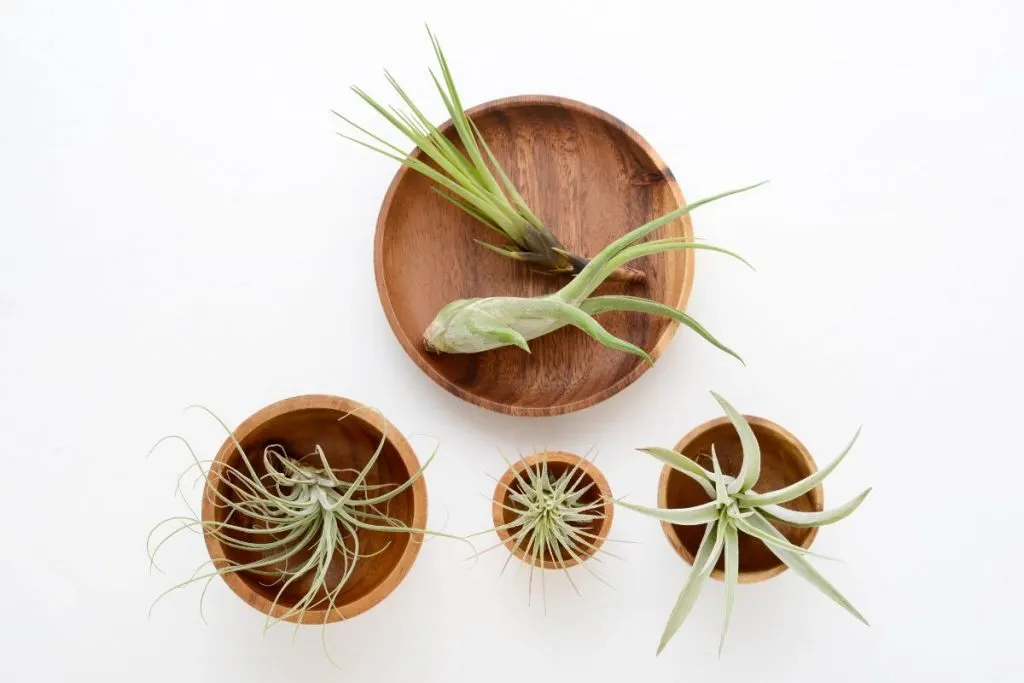
One article, ten minutes of your time and you know how long do air plants live and much more about them. I think this was a very good time spent, what do you think?
If you had doubts about these plants before, I sincerely hope you don’t now. We have tried to explain everything about these plants in this article.
Among the types offered, we hope that you can choose a special one for your home. Air fern, tillandsia plant, sky plant, xeric plants, or some other one, you can’t go wrong.
These plants, very easy to maintain once you read all about them, will give your home a unique look, and you will be able to relax now that you know all about them.
Dear ladies, thank you for your trust and reading.
See you soon!

